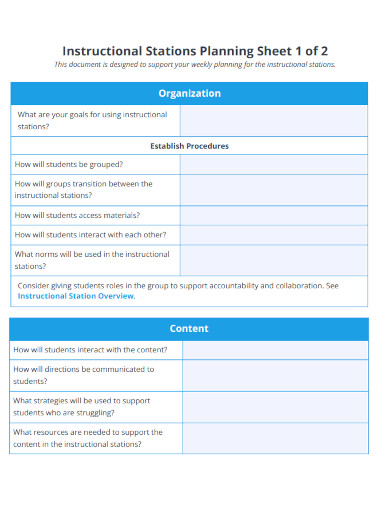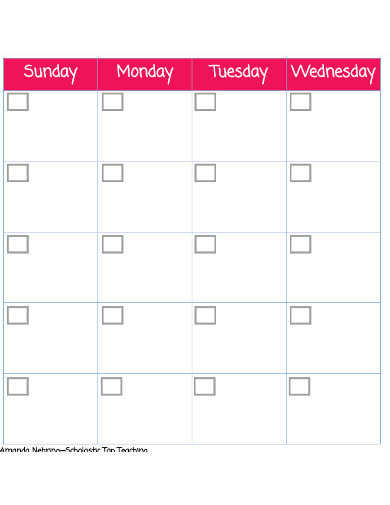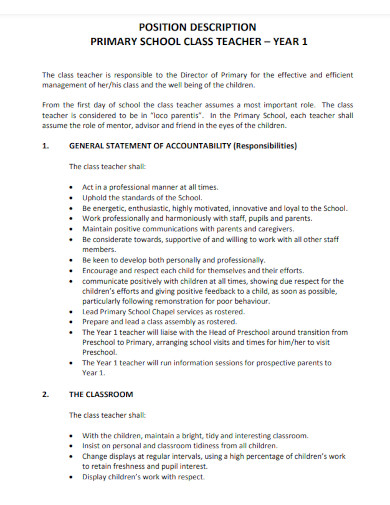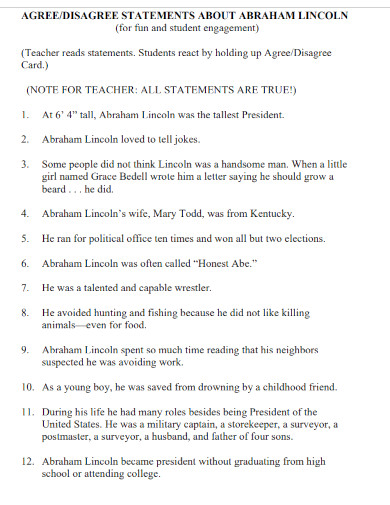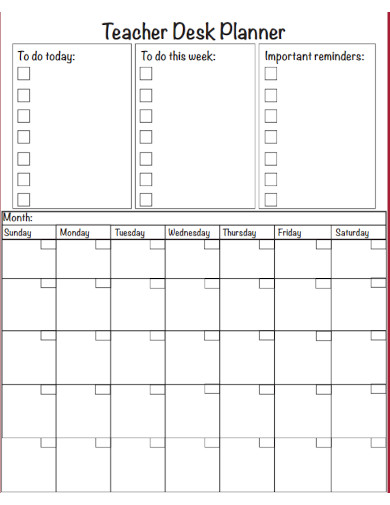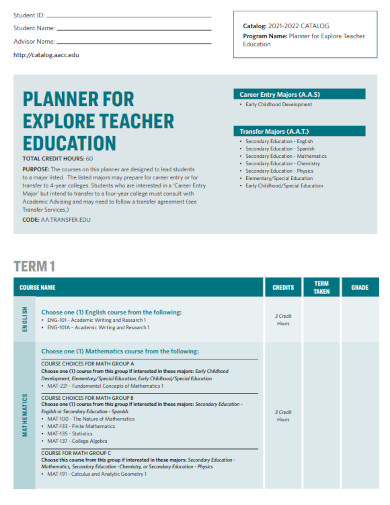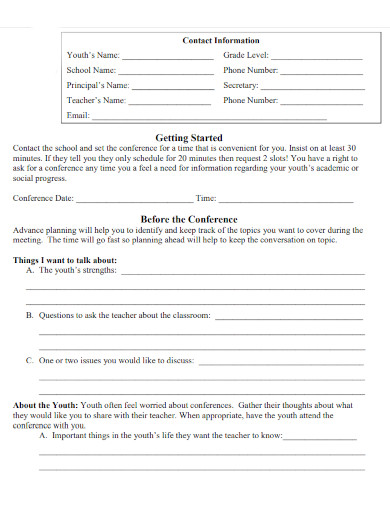One of the most significant advantages of using a teacher lesson planner is that it helps to manage time effectively. With numerous classes, weekly activity schedule, and administrative duties, teachers can quickly become overwhelmed. The planner helps to prioritize task lists, so teachers can effectively plan and organize their time. By using a teacher planner, educators can stay on top of deadlines and effectively plan lessons that meet the curriculum requirements.
Moreover, a teacher planner is a tool that provides a clear lesson plan outline and activities. It enables teachers to plan their lessons in advance, ensuring that they cover all the essential topics and skills required. Additionally, a planner provides a platform to reflect on previous lessons and make improvements where necessary. It ensures that teachers have a thorough understanding of what they need to teach and that they deliver quality education to their students.
6+ Teacher Planner Samples
1. Teacher Planner Example
2. School Teacher Planner
3. Primary School Class Teacher Planner
4. Teacher Lesson Planner
5. Teacher Desk Planner
6. Teacher Education Planner
7. Parent Teacher Conference Planner
What is Teacher Planner?
A teacher planner is a tool used by teachers to organize their lesson plans, work schedules, and other important information related to their teaching responsibilities. It typically includes sections for daily, weekly, and monthly planning samples, as well as areas for recording student attendance, grades, and other pertinent information.
How To Make Teacher Planner?
Another significant advantage of a teacher planner is that it helps to manage student attendance and grades. It enables teachers to keep attendance tracker and identify patterns or issues that may need to be addressed. Additionally, a planner provides a system for recording grades, making it easier to manage and report progress to parents and administrators. A teacher planner helps teachers stay on top of student performance evaluation and make necessary adjustments to improve student learning outcomes. Making a teacher planner can be a fun and personalized project that can help educators stay organized and on top of their teaching responsibilities. Here are some steps to create a teacher planner:
Step 1- Determine Format
Decide whether you want a physical planner or a digital one. Physical planners are great for those who prefer writing and have a physical copy to reference, while digital planners are useful for those who prefer the convenience of accessing their planner on their computer or phone.
Step 2- Choose Template
If you choose to create a physical planner, select a template that suits your needs. Templates can be found online or in craft stores. You can also create your template using a notebook, journal report, or binder. A teacher planner should have sections for daily, weekly, and monthly planning, as well as areas for recording student attendance, grades, and other pertinent information. You may also want to include sections for notes, goals, to-do lists, and other features that can help you stay organized and on track.
Step 3- Customize Planner
Personalize your planner by adding your name, school name, and other details that make it unique to you. You can also include stickers, dividers, and other decorations to make it visually appealing. If you create a physical planner, print out your template and assemble it. For a digital planner, save your template in a format that you can access easily, such as a PDF or Excel spreadsheet.
Step 4- Use Your Planner
Once your planner is complete, start using it to plan your lessons, record attendance and grades, and stay on top of your teaching responsibilities. Make sure to update it regularly to ensure it remains accurate and up to date. If you create a physical planner, print out your template and assemble it. For a digital planner, save your template in a format that you can access easily, such as a PDF or Excel spreadsheet.
Should I use a physical or digital teacher planner?
It depends on your personal preference. Physical planners are great for those who prefer writing and have a physical copy to reference, while digital planners are useful for those who prefer the convenience of accessing their planner on their computer or phone.
Where can I find templates for a teacher planner?
Templates for teacher planners can be found online or in craft stores. You can also create your template using a notebook, journal, or binder cover templates.
How can I personalize my teacher planner?
Personalize your planner by adding your name, school name, and other details that make it unique to you. You can also include stickers, dividers, and other decorations to make it visually appealing.
In conclusion, making a teacher planner can be a fun and useful project for educators. It allows them to stay organized, manage their time effectively, and provide a clear outline of their lessons and activities. By customizing a planner to suit their needs, teachers can create a tool that helps them deliver quality education to their students.
Related Posts
FREE 10+ Financial Planner Samples in PDF | MS Word | Apple Pages
FREE 10+ Digital Planner Samples in PDF | Apple Pages | MS Word
FREE 7+ Year Life Plan Samples in PDF
FREE 6+ 7 Day Weekly Planner Samples in PDF
FREE 50+ Project Planner Samples in PDF | MS Word
FREE 50+ Planner Samples in PDF | MS Word
FREE 10+ Menu Planner Samples in PDF
FREE 10+ Training Planner Samples in PDF
FREE 6+ Bill Planner Samples in PDF
FREE 8+ Birthday Planner Samples in PDF
FREE 10+ Yearly Planner Samples in PDF | MS Word | Apple Pages
FREE 3+ Covid Birth Plan Samples in PDF
FREE 10+ Party Planner Samples in PDF
FREE 10+ Content Plan Samples in PDF
FREE 3+ Hourly Daily Planner Samples in PDF

